1. Introduction
The term "gender stereotypes" refers to the stereotypical beliefs and stereotyped expectations that society and culture have on the innate traits, roles, skills, interests, and other traits that men and women possess. Gender preconceptions concerning men's and women's clothing are frequently conveyed in the world of fashion and apparel as stereotypes and expectations. Pink and blue are two popular gender stereotypes, with pink being regarded as a female hue and blue as a male one. People are prevented from realizing their freedom and equality as a result of these perceptions, which also result in limitations and discrimination against them. Gender stereotypes invariably have an impact on fashion and clothes since they are significant cultural symbols and social communication tools. Gender stereotypes affect the way people dress and the fashion industry due to limited options for expression, reinforcement of gender binary, and gender unequal treatment.
2. Results
2.1. Early challenges to gender stereotypes
2.1.1. Coco Chanel and women’s freedom in fashion
Since the 20th century, some fashion designers have tried to break the gender stereotype of dress, the most famous representative of which is Ms. Coco Chanel. Coco Chanel is the famous feminist pioneer in the fashion industry and the founder of Chanel. Her clothes are known for their simplicity, comfort, and classic design. Until the 14th century, women could only sit sideways on horses to ride, because the old fashion followed the rules that women could not wear pants and could not ride like men, so in the early 20th century, Chanel changed the equestrian fashion by designing a riding suit for herself and put forward the concept of "men's clothing", so that women could also dress like men, more free and comfortable.
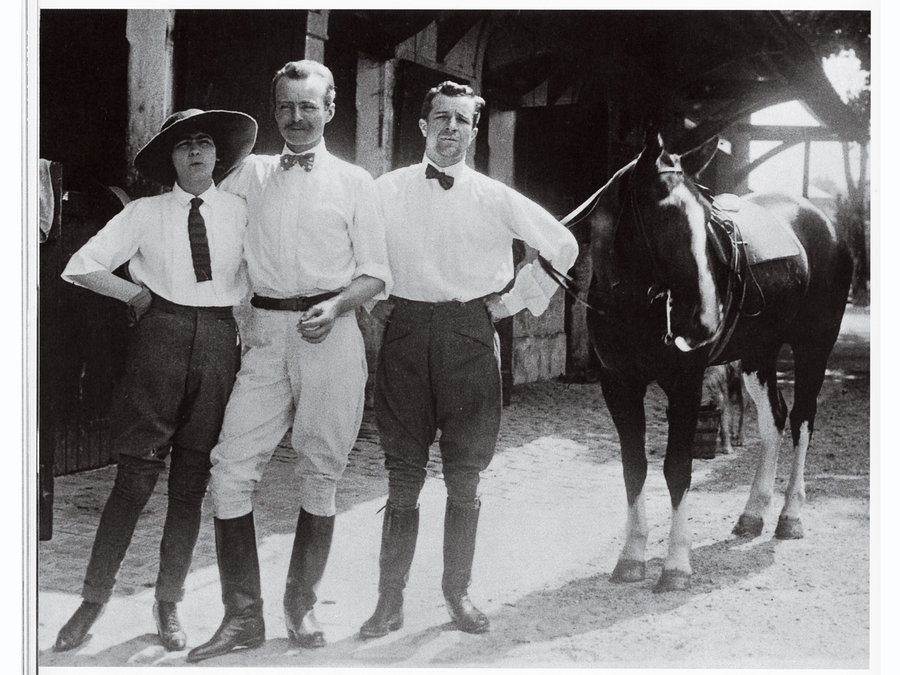
Figure 1 shows Chanel wearing the same white shirt and riding pants as men, with a short tie. These clothes, which used to be considered male, were gradually opened up to women, which was a good start to breaking gender stereotypes. To this day, Chanel has also inherited Coco Chanel's innovative spirit and contributed to breaking gender stereotypes. For example, in Chanel's Spring/Summer 2021 Haute Couture collection, many masculine elements appear, such as loose cuts and pronounced shoulders, allowing women wearers to be more free and comfortable (fig. 2).
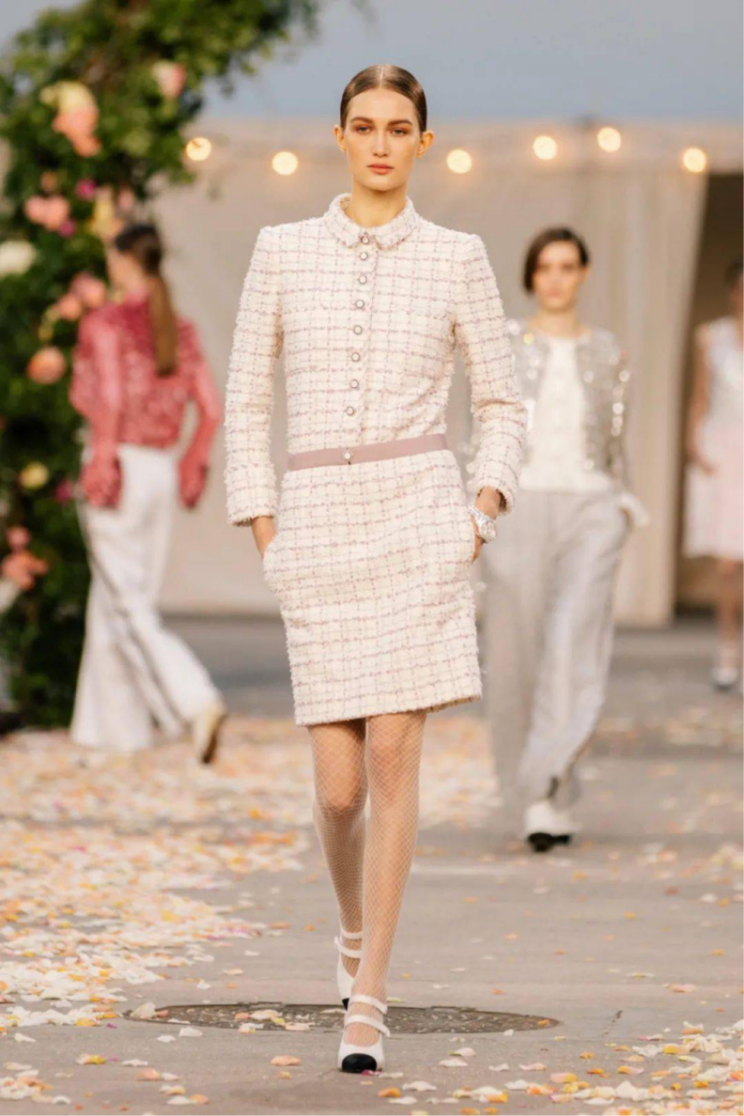
This comfortable tailoring not only continues to break the stereotype that women's bodies are bound, but also inherits the spirit of Coco Chanel.
2.1.2. Yves Saint Laurent’s Le Smoking suit
In 1966, French fashion designer Yves Saint Laurent launched a women's collection - Le Smoking. This is a fashion revolution that breaks traditional gender stereotypes, allowing women to wear masculine suits and still be elegant and confident. The design was originally inspired by Saint Laurent seeing women in masculine clothes when attending dinner parties, because the traditional dress at that time was long skirts [1]. He wanted to devise a fashion alternative to traditional fashion choices, allowing women to wear a suit that exuded confidence and glamor. The model in Figure 3 is holding a cigarette and combing her hair back.
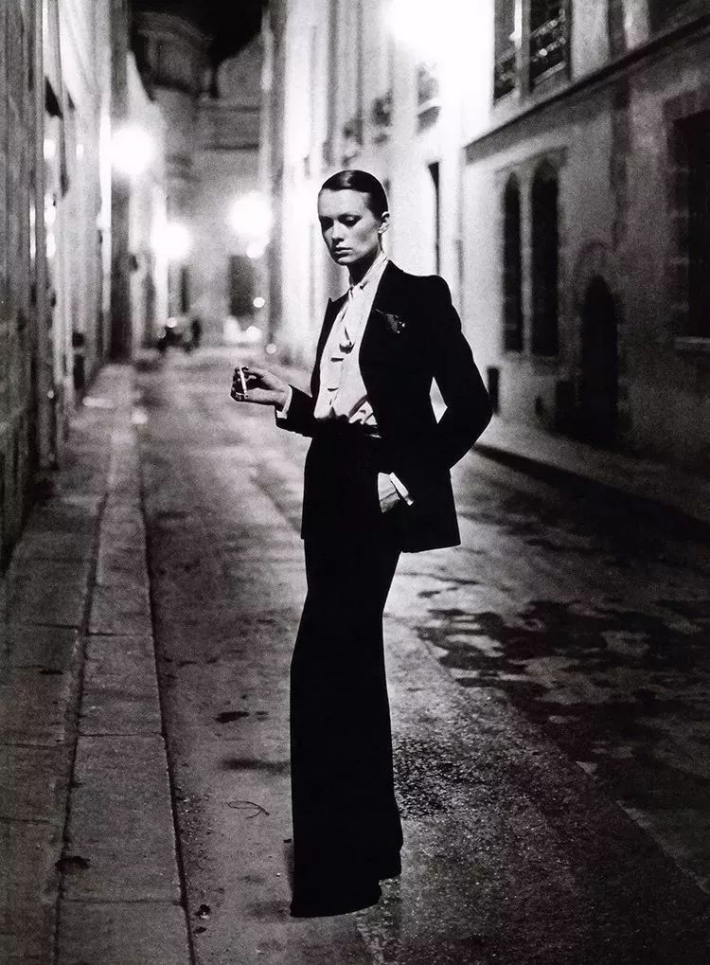
The Le Smoking suit on her body not only maintains the silhouette of the male tuxedo but also adopts a more fashionable collar and slightly narrower waist tailoring to adapt to the female body shape. The shoulder pads on the shoulders of the jacket endow women with a "masculine look". Saint Laurent chose muslin on the fabric of the shirt and replaced the men's bow tie with an elegant ribbon, making the whole look more feminine [2]. Cigarettes, tuxedo silhouettes, and back hairstyles are all masculine, while ribbons are feminine. Saint Laurent combined these masculine and feminine elements, making the Le Smoking suit not only break the stereotype of women in fashion but also retain the unique charm of women's clothing.
Saint Laurent's suit collection was revolutionary for the fashion industry at the time. In those days, it was considered against social norms and gender stereotypes for women to wear men's clothes. However, Yves Saint Laurent's belief that women should have the same freedom to dress as men led to the launch of this unique women's collection. Since its launch, Saint Laurent's smoking suit has become a highly sought-after and classic fashion symbol, emulated by major fashion houses and designers. Especially in the 1960s and 1970s, with the rise of feminist and gay rights movements, the fashion industry responded to these movements. In “Deconstruction of Gender Stereotypes through Fashion,” Akdemir explains, “Those periods were another important points at fashion not about the construction of gender stereotypes but about the deconstruction of gender stereotypes. Because they were the first steps of the deconstruction of gender stereotypes and basis of today's fashion styles.” [3] These great designers paved the way for later people to break gender stereotypes and also made society begin to pay attention to gender stereotypes.
2.2. The rise of unisex fashion
2.2.1. Rad Hourani’s neutral vision
At the beginning of the 21st century, unisex dressing came to the forefront of fashion, a new concept based on the deconstruction of gender stereotypes. 2007 saw the emergence of Rad Hourani, the world's first unisex fashion designer. In “The Political of the Neutral: Rad Hourani's Unisex Vision,” Halliday claims, “While couturiers such as Jean Paul Gaultier have pushed the boundaries of gender and queerness, none before Hourani have crafted unisex garments.” [4] Hourani has truly brought non-sexism into fashion and into people's minds. Rad Hourani's clothing works retain the streamlined forms of modernism but also show the industrial aesthetics of fashion.
Most of the clothes designed by Hourani are mainly black, white, and gray or have a large area of solid color. Unlike pink or blue, black, white, and gray have never been categorized as the "unique" color for men or women in gender stereotypes. This color that maintains a "neutral" attitude seems to be the best choice for a neutral style. At the 2013 Paris Spring Haute Couture show, Rad Hourani once again stunned the fashion industry with his artwork (fig. 4) [5].
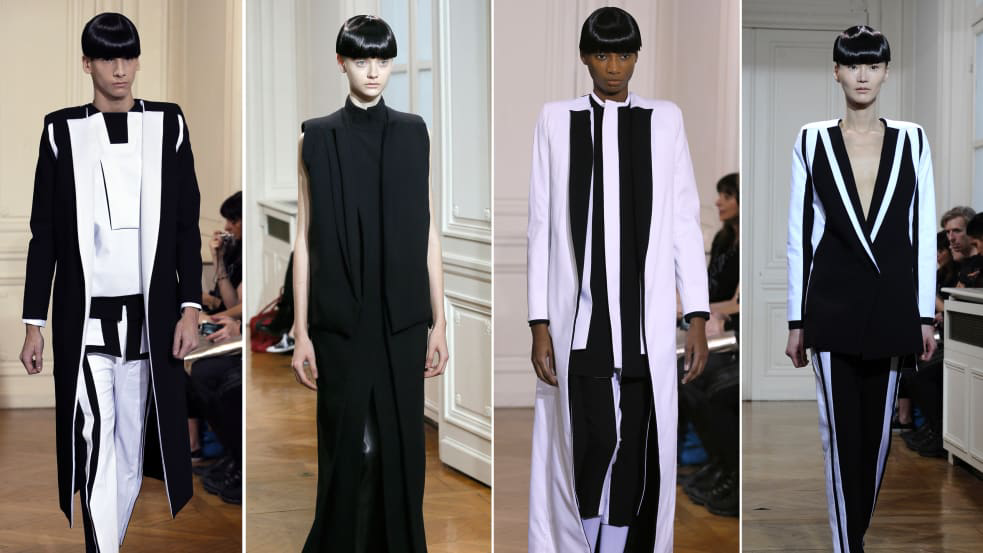
All the models on the runway were dressed in square silhouettes, and Hourani gave up emphasizing the waistline. Women did not need to expose their slender legs, and men did not need to expose their sturdy chests. This weakened or concealed the unique characteristics of men and women, thus achieving the goal of making it impossible to distinguish between men and women.
Nowadays, more people are starting to join the ranks of breaking gender stereotypes, and there are more choices for neutral and gender-neutral clothing, which is a good sign. Because first of all, these two dressing styles can eliminate the differences in dressing between men and women, and reduce the restrictions and stereotypes on personal expression. Secondly, the popularity of neutral and non-sexist clothing can also promote the diversified and inclusive development of the fashion industry, so that people of different backgrounds and genders can find their expression and sense of belonging in the fashion industry. At the same time, it also promotes the development and innovation of the fashion industry. Finally, wearing these two styles can also eliminate gender stereotypes and prejudices, allow people to treat men and women more equally, and promote gender equality and social progress. Therefore, people should embrace this fashion trend with a more positive and inclusive attitude.
2.3. Celebrity influence on gender norms
2.3.1. Harry Styles and popular culture
In addition, with the rapid development of the Internet, the influence of celebrities and artists is also increasing, and their dressing styles will also be noticed and imitated by people. Therefore, many celebrities take this opportunity to provide good examples and role models for breaking gender stereotypes. For example, Harry Styles, a pop singer and actor, and a pioneer in the fashion industry, has been widely followed in his dressing style. He has repeatedly appeared in public view wearing feminine clothing and accessories, becoming one of the representatives who break gender stereotypes. The most impressive thing is that he wore a Gucci designed long dress and appeared on the 2020 cover of Vogue, becoming the first male artist to wear a dress and appear in the magazine (fig. 5).
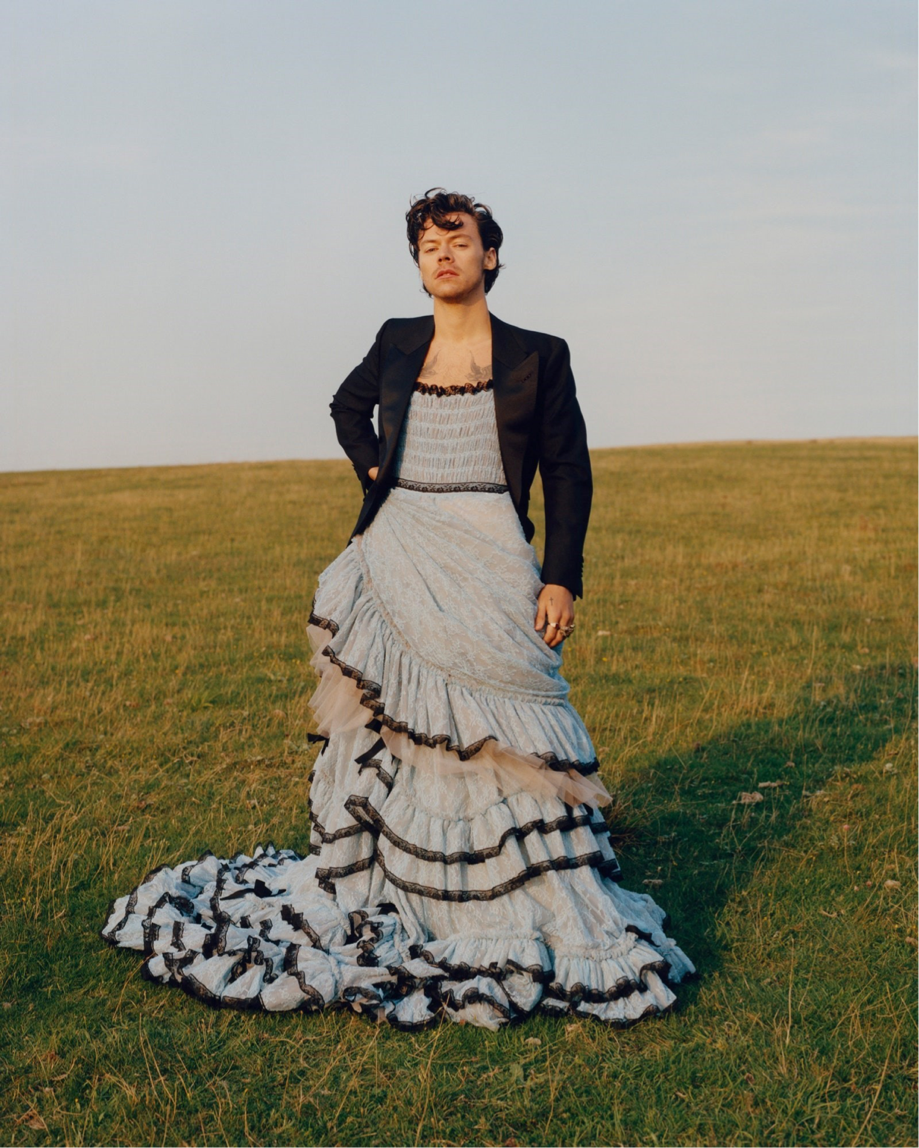
This once again proves that gender stereotypes in the fashion industry are gradually disintegrating, and the gender boundaries in fashion are gradually becoming blurred.
On the other hand, Harry's actions also caused widespread controversy. American conservative writer Candace Owens even publicly condemned it on Twitter. In Owens' view, people who break the rules like Harry Styles are not in line with common sense, in “Modern Men Are Breaking Traditional Gender Norms.” Anouk van concluded, “Owens is defining gender roles and she expressing which rules she thinks people should follow. People who break those rules can be seen as outsiders. ” [6] Despite this, Harry still has the support and appreciation of many people, in “Harry Styles Approaches Fashion the Way We All Should.” Margaret mentioned a sentence that Harry said, "When you take away 'There's clothes for men and there's clothes for women,' once you remove any barriers, obviously you open up the arena in which you can play," [7] Harry's attempt has promoted diversified and inclusive fashion, and influenced the way the younger generation views gender stereotypes. Many boys are encouraged by Harry to start trying skirts, which is undoubtedly a good start.
In fact, the Internet controversy triggered by Harry is not a bad thing, because people's thoughts are often improved by the collision of different viewpoints. Only in open discussions and debates can we have the opportunity to better understand and respect differences, and promote our thinking and reflection on issues such as gender roles and identity, thereby promoting social progress and inclusive development. In this sense, Harry Styles' move to wear a dress is a testament to courage and exploration, offering us a way to think about and redefine gender and fashion.
3. Conclusion
In conclusion, it's clear that gender stereotypes heavily influence design and clothing. However, more and more people are starting to challenge this notion and experiment with unisex, gender-neutral looks. While many fail to appreciate neutral and non-sexist clothing, it must be acknowledged that this trend breaks down gender norms, allows people to express themselves more freely, and supports diversity and growth in the fashion industry. In the future, one can expect more fashion brands and designers to focus on the development of unisex and non-sexist clothing. At the same time, people should continue to support the popularity of this style of dressing, making it a broader social trend, so that more people can enjoy the freedom and diversity brought by neutral, non-sexist dress. This is a significant step in the fight against gender stereotypes by the fashion industry, as only when people begin to speak out in favor of gender equality will the sector be able to advance and innovate.
References
[1]. Nhat, Minh. “Inside Le Smoking, the First Suit for Women from Yves Saint Laurent.” L'Officiel Singapore. L'Officiel, September 12, 2021. https: //www.lofficielsingapore.com/fashion/yves-saint-laurent-le-smoking-the-first-suit-for-women-from
[2]. “Smoking Saint Laurent 2022: The Story of a Couture Icon - Icon.” ICON, August 12, 2022. https: //www.icon-icon.com/en/smoking-saint-laurent-2022-the-story-of-a-couture-icon/.
[3]. Akdemir, Nihan. “Deconstruction of Gender Stereotypes through Fashion.” European Journal of Social Science Education and Research 5 (May 2018): 259–64. https: //revistia.com/files/articles/ejser_v5_i2_18/Akdemir.pdf
[4]. Barry, Ben, Andrew Reilly, and Rebecca Halliday. “The Political of the Neutral: Rad Hourani's Unisex Vision.” Essay. In Crossing Gender Boundaries Fashion to Create, Disrupt and Transcend. Bristol, UK ; Chicago, USA: University of Chicago Press, 2020. https: //ebookcentral-proquest-com.libproxy.newschool.edu/lib/newschool/reader.action?docID=5997459& ppg=100
[5]. Sidell, Misty White. “The Birth of Unisex Couture: Rad Hourani.” The Daily Beast. The Daily Beast Company, July 12, 2017. https: //www.thedailybeast.com/the-birth-of-unisex-couture-rad-hourani
[6]. Leeuwen, Anouk van. “Modern Men Are Breaking Traditional Gender Norms.” Diggit Magazine, April 12, 2020. https: //www.diggitmagazine.com/articles/modern-men-are-breaking-traditional-gender-norms
[7]. Blatz, Margaret. “Harry Styles Approaches Fashion the Way We All Should.” Elite Daily. Elite Daily, November 13, 2020. https: //www.elitedaily.com/p/harry-styles-quotes-about-fashion-for-his-vogue-cover-are-so-refreshing-43561500
Cite this article
Sheng,W. (2025). Breaking Gender Stereotypes: Diversity in Fashion and Apparel. Lecture Notes in Education Psychology and Public Media,127,9-15.
Data availability
The datasets used and/or analyzed during the current study will be available from the authors upon reasonable request.
Disclaimer/Publisher's Note
The statements, opinions and data contained in all publications are solely those of the individual author(s) and contributor(s) and not of EWA Publishing and/or the editor(s). EWA Publishing and/or the editor(s) disclaim responsibility for any injury to people or property resulting from any ideas, methods, instructions or products referred to in the content.
About volume
Volume title: Proceeding of ICIHCS 2025 Symposium: Exploring Community Engagement: Identity, (In)equality, and Cultural Representation
© 2024 by the author(s). Licensee EWA Publishing, Oxford, UK. This article is an open access article distributed under the terms and
conditions of the Creative Commons Attribution (CC BY) license. Authors who
publish this series agree to the following terms:
1. Authors retain copyright and grant the series right of first publication with the work simultaneously licensed under a Creative Commons
Attribution License that allows others to share the work with an acknowledgment of the work's authorship and initial publication in this
series.
2. Authors are able to enter into separate, additional contractual arrangements for the non-exclusive distribution of the series's published
version of the work (e.g., post it to an institutional repository or publish it in a book), with an acknowledgment of its initial
publication in this series.
3. Authors are permitted and encouraged to post their work online (e.g., in institutional repositories or on their website) prior to and
during the submission process, as it can lead to productive exchanges, as well as earlier and greater citation of published work (See
Open access policy for details).
References
[1]. Nhat, Minh. “Inside Le Smoking, the First Suit for Women from Yves Saint Laurent.” L'Officiel Singapore. L'Officiel, September 12, 2021. https: //www.lofficielsingapore.com/fashion/yves-saint-laurent-le-smoking-the-first-suit-for-women-from
[2]. “Smoking Saint Laurent 2022: The Story of a Couture Icon - Icon.” ICON, August 12, 2022. https: //www.icon-icon.com/en/smoking-saint-laurent-2022-the-story-of-a-couture-icon/.
[3]. Akdemir, Nihan. “Deconstruction of Gender Stereotypes through Fashion.” European Journal of Social Science Education and Research 5 (May 2018): 259–64. https: //revistia.com/files/articles/ejser_v5_i2_18/Akdemir.pdf
[4]. Barry, Ben, Andrew Reilly, and Rebecca Halliday. “The Political of the Neutral: Rad Hourani's Unisex Vision.” Essay. In Crossing Gender Boundaries Fashion to Create, Disrupt and Transcend. Bristol, UK ; Chicago, USA: University of Chicago Press, 2020. https: //ebookcentral-proquest-com.libproxy.newschool.edu/lib/newschool/reader.action?docID=5997459& ppg=100
[5]. Sidell, Misty White. “The Birth of Unisex Couture: Rad Hourani.” The Daily Beast. The Daily Beast Company, July 12, 2017. https: //www.thedailybeast.com/the-birth-of-unisex-couture-rad-hourani
[6]. Leeuwen, Anouk van. “Modern Men Are Breaking Traditional Gender Norms.” Diggit Magazine, April 12, 2020. https: //www.diggitmagazine.com/articles/modern-men-are-breaking-traditional-gender-norms
[7]. Blatz, Margaret. “Harry Styles Approaches Fashion the Way We All Should.” Elite Daily. Elite Daily, November 13, 2020. https: //www.elitedaily.com/p/harry-styles-quotes-about-fashion-for-his-vogue-cover-are-so-refreshing-43561500









